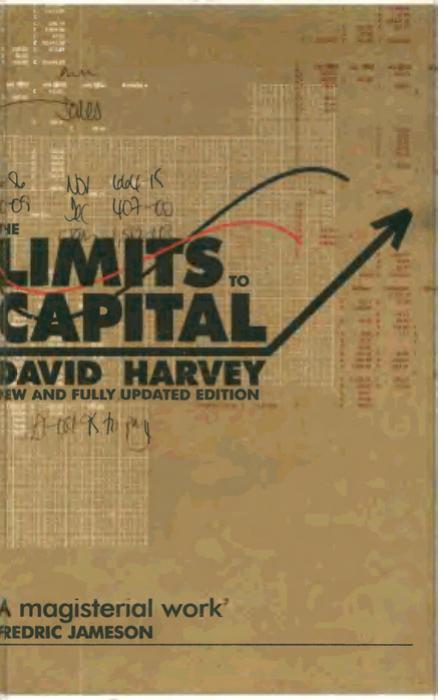The Limits to Capital by David Harvey

Author:David Harvey
Language: eng
Format: epub, pdf
Publisher: Verso Books
CHAPTER 9
Money, Credit and Finance
Marx did not complete his analysis of monetary and financial phenomena. He sets out a very general and highly abstract theory of money in the first volume of Capital (there summarizing the lengthier but more tentative analyses in the Grundrisse and in the Contribution to a Critique of Political Economy). His notes on the functioning of the credit system were left in great confusion. Engels had great difficulty in putting them into any kind of order for publication in the third volume of Capital. There was, Engels complained in his Preface to that work, ‘no finished draft, not even a scheme whose outlines might have been filled out – often just a disorderly mass of notes, comments and extracts.’ Engels was faithful to Marx and ended up replicating most of the disorder. Here was a major piece of ‘unfinished business’ in Marx’s theory.
Just how important Marx thought this piece of unfinished business to be is difficult to tell. He thought the analysis of money of sufficient importance to place it before his investigation of the circulation of capital. But he also insists that the origin of profit (in surplus value) could be understood without appealing to any of the categories of distribution. The analysis of credit, finance and the circulation of interest-bearing capital is therefore left until after the analysis of general movements in even the rate of profit. It is doubtful if such a tardy introduction of the role of credit can be justified. Even en route to his derivation of the tendency towards a falling rate of profit, Marx frequently indicates that this or that problem could not be resolved without consideration of the role of credit. When we pull together these remarks, the credit system appears more and more as a complex centrepiece within the Marxian jigsaw of internal relations. But it is a centrepiece that depicts relations within the capitalist class – between individual capitalists and class requirements as well as between factions of capital. The credit system is a product of capital’s own endeavours to deal with the internal contradictions of capitalism. What Marx will show us is how capital’s solution ends up heightening rather than diminishing the contradictions.
Unfortunately, Marxists have paid little attention to this aspect of theory. This neglect is all the more surprising given the significance that many, taking their cue primarily from Lenin, have attached to the ‘finance form of capitalism’ as a specific stage in the history of capitalist development. Hilferding’s work (which Lenin drew upon directly) was published in 1910 and remained, until very recently, the only major attempt to deal with the subject of the credit system head on.1 Rosdolsky and de Brunhoff put Marx’s analysis of money back into the center of things during the 1960s. But the pickings in the Marxist literature on the credit system are still remarkably slim.2
In what follows I will try to plug the theoretical gaps. The aim is to integrate the analysis of money and credit with the general theory of accumulation.
Download
This site does not store any files on its server. We only index and link to content provided by other sites. Please contact the content providers to delete copyright contents if any and email us, we'll remove relevant links or contents immediately.
The Secret History by Donna Tartt(18845)
The Social Justice Warrior Handbook by Lisa De Pasquale(12141)
Thirteen Reasons Why by Jay Asher(8793)
This Is How You Lose Her by Junot Diaz(6794)
Weapons of Math Destruction by Cathy O'Neil(6142)
Zero to One by Peter Thiel(5685)
Beartown by Fredrik Backman(5596)
The Myth of the Strong Leader by Archie Brown(5425)
The Fire Next Time by James Baldwin(5248)
How Democracies Die by Steven Levitsky & Daniel Ziblatt(5127)
Promise Me, Dad by Joe Biden(5087)
Stone's Rules by Roger Stone(5026)
A Higher Loyalty: Truth, Lies, and Leadership by James Comey(4843)
100 Deadly Skills by Clint Emerson(4840)
Rise and Kill First by Ronen Bergman(4702)
Secrecy World by Jake Bernstein(4644)
The David Icke Guide to the Global Conspiracy (and how to end it) by David Icke(4625)
The Farm by Tom Rob Smith(4435)
The Doomsday Machine by Daniel Ellsberg(4416)
